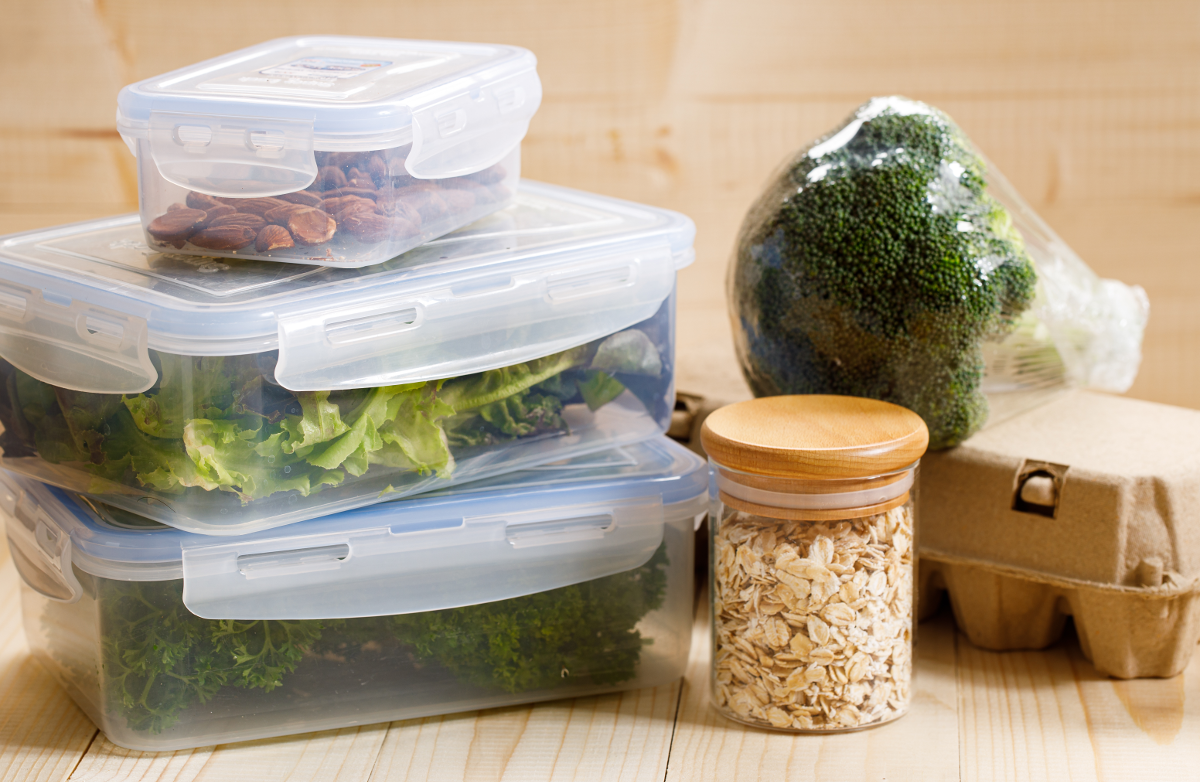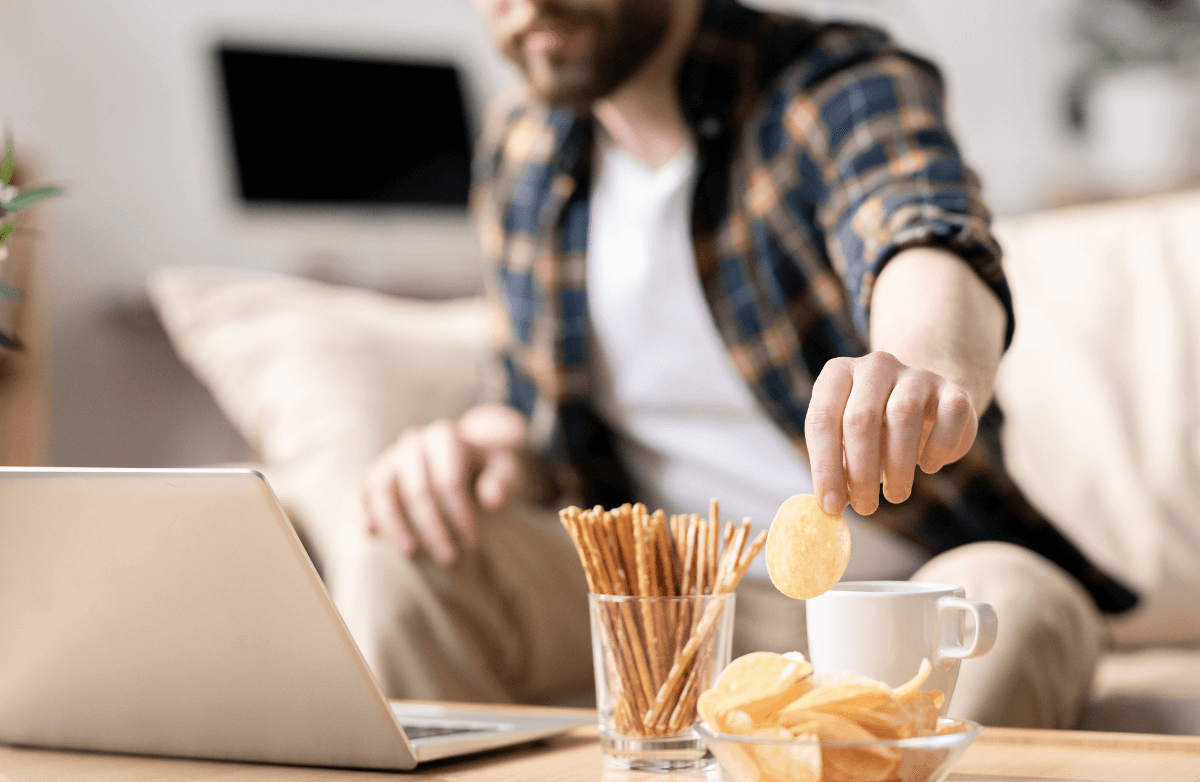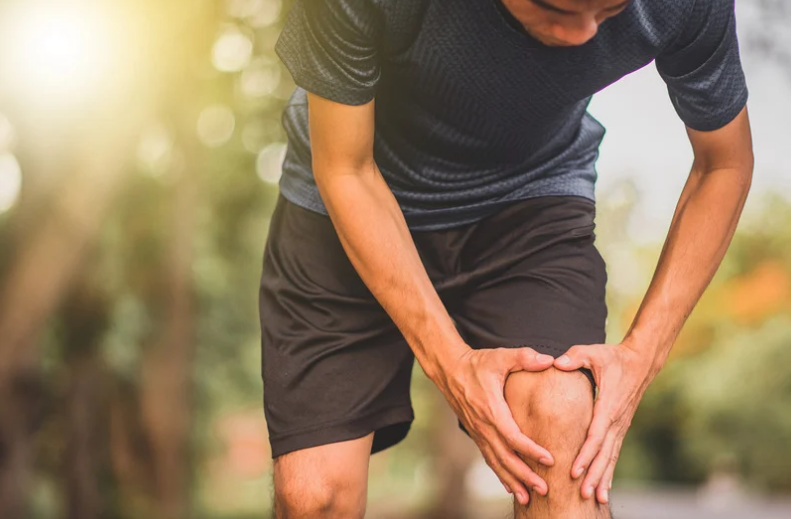For many people, hitting the big 5-0 represents a fresh start of sorts. In many cases, the kids are grown or in college, the pace of daily life has slowed and there's more time to spend on self-improvement, making this stage of life ideal for starting or furthering fitness and nutrition goals.
That said, those in their 50s may face some challenges or limitations they didn't as 20-
-
Follow proper technique. "With age, injuries tend to become more chronic and serious, and take longer to heal. People have a tendency to be more concerned with burning calories and getting their heart rate up, but to do so at the expense of proper technique is ill-advised. When you're overly fatigued, your form naturally falters." Exercise physiologist and author Rachel Straub
-
Don’t be afraid to try something new. "Just because you’ve been a walker for the past 20 years doesn’t mean you can’t try spinning, swimming or any other activity you might enjoy. You might be surprised at how it breathes new life into your exercise routine and develops muscles you never even knew you had." Fitness coach Jen Mueller
-
Spend more time on your warm-up. "The older we get, the longer it takes to recover from exercise and the injuries that happen out of the blue. Spending some quality warm-up time doing some mobility and muscle activation exercises is worth its weight in gold, and your aches and pains will thank you for it." ACE-certified personal trainer Shane McLean
-
Treat it as a lifelong commitment. "Now is not the time to get lazy! Even if you were a stellar athlete in your younger days, you are still just as susceptible to chronic health problems resulting from lack of movement and a poor diet. The old sayings that 'You are what you eat' and 'If you don't use it, you lose it,' are now truer than ever." Exercise physiologist and author Rachel Straub
-
Find a fun activity. "I picked up tennis in my 30s and am still going strong in my 40s. I also love mat and reformer Pilates, which helps me prevent injury on the courts. So what’s next? I found a Zumba class given by a fantastic teacher. As I can’t stay up late to go to a dance club, nor do I have the inclination, Zumba lets me dance the afternoon or morning away without staying up past my bedtime." Toby Amidor, M.S., R.D., author of "The Greek Yogurt Kitchen"
-
Train the brain. "Mental training is just as important as physical strength for reversing or slowing the aging process. Consider brain training or using any cognitive stimulation therapy, which combines physical and cognitive exercises while providing millisecond feedback for each action. This technology improves the communication between brain cells and timing within the brain, which leads to better control of limbs and muscles." Matthew Reicher, M.S., from New York Sports Science Lab
-
Don't let
sickness stop you. "Illness is more inevitable, unfortunately. When it hits you, exercise is still imperative (even if it's only bed exercises). Learning how to adjust your workouts regardless of your physical health is now more important than ever." Exercise physiologist and author Rachel Straub -
Find your "why." "Once my clients have a strong enough 'why,' they tend to struggle significantly less with exercise and nutrition adherence. They had originally thought they lacked self-discipline, but they really lacked desire." Personal trainer Dani Singer
-
Flexibility is now more important than ever. "Poor posture, for example, leads to decreased lung capacity, which affects your heart. If you're stiff, it's time to focus more time on increasing your flexibility, whether it be through yoga, Pilates or stretching." Exercise physiologist and author Rachel Straub
-
Find your balance. "Implement balance and stability training at this stage of life. Exercises that challenge your stability will work your core and strengthen your balance. Because we start to lose our balance very easily as we get older, we become more prone to accidental falls. Strengthening leg and core muscles with these types of exercise, such as the single-leg balance reach, will help minimize the risk." Jeff Warley, trainer with 50 Grand Health and Fitness
-
Add nutrition to the equation. "You may have gotten by on a less than ideal diet for decades, but it eventually catches up with you. If you start to experience more fatigue, high blood pressure, high cholesterol and/or weight gain, it's time to clean up your diet. Your workouts are not enough!" Exercise physiologist and author Rachel Straub
-
Update your approach. "Clients are exhausted by the time they start with us because they have tried and failed so many times over the last 10, 20 or 40 years to get back in shape. The truth is, they're simply using an outdated approach. What worked for them in their 20s won't work as well in their 50s. Their physiology has changed and, more importantly, their lives have changed. Find a fitness plan that appeals to you—50-year-old you, not 20-year-old you—and fitness will turn from a chore into a pleasure." Personal trainer Dani Singer
-
Start (or continue) strength training. "Strength training is vital for improving balance, controlling the center of gravity and preventing muscle atrophy and bone density loss as we age. It is well-documented that muscle strengthening exercises help prevent the loss of muscle mass, allowing your body to stay healthy as you age. An added benefit of increased muscle mass is that it increases your metabolic rate, meaning you'll be able to burn fat faster." Matthew Reicher from New York Sports Science Lab
-
Select exercises that make you feel better, not worse. "With age, aches and pains may start to impede your workouts. Learn to say no to others—even personal trainers—who recommend dangerous exercises. What is suitable for someone under 30 isn't necessarily suitable for someone over 50." Exercise physiologist and author Rachel
Straub -
Watch your back. "The back muscles become increasingly important as we age. You'll see a lot of hunched posture in elderly people. This can be fought by focusing on the muscles [that] surround the spine. It will keep your
posture healthy and your back pain-free. Perform a lot of rows at the gym in unison with your mobility routine." Patrick Henigan, owner of Jacksonville Fitness Academy -
Keep a food journal. "The amount of calories our bodies require decreases as we age. In my practice, I find that most people underestimate the amount of calories they are consuming. Keeping a food journal will help you notice patterns in your food intake." Caroline Apovian, M.D., Director of the Nutrition and Weight Management Program at the Boston Medical Center
-
Know when to back off. "In my late 40s, I
was doing hard-core workouts all week, and I suddenly found that I was tired all the time, my knee and ankle started aching and I was gaining weight. I forced myself to back off. I started walking three miles a few times a week and doing a lot of yoga. Amazingly enough, I not only didn't gain weight—I lost it. By 50, our adrenals sometimes can't handle the physical stress of intense workouts as well as they used to. Gentler exercises, such as yoga, can improve flexibility, balance and even strength without the same level of stress. Also, the mindfulness of a yoga practice can positively affect hormone levels." Health coach Liza Baker -
Reevaluate your diet. "Instead of counting calories, simply eat what's good and don't eat what is not. Eat more plants, eliminate or reduce simple
carbs and all processed junk, and eat healthy fats like avocado, extra-virgin olive oil, coconut oil, salmon and grass-fed butter." Lorraine Miano, health coach and author of "The Magic of Menopause" -
Welcome weights, not bulk. "Strength training is vital for women over 50, as they are at greater risk of developing osteoporosis, which could be triggered by hormone changes. However, many women avoid strength training because of the worry that lifting will make them develop 'bulky' muscles. The key is starting women with bodyweight exercises that will make them feel stronger in a matter of weeks. After this, they can progress to lighter weights and so on, once they realize how much more confident and energized strength training makes them." Sam Murphy, strength and conditioning coach at
Amaven -
Practice mindful eating. "Our metabolic rates are in slow decline. Portion control and mindful eating are key. Eating lean proteins and vegetables (two fistfuls proportionate to your hand) of each are optimal for decreasing calories and getting essential nutrients in your body. Mindful eating means eating until you're 80 percent full, not being stuffed, in order to control and regulate metabolism." Personal trainer Darin Hulslander
-
Adjust your goals. "A 40-inch chest and six-pack
abs may not be the best choice as we get older. Instead, choose goals like staying healthy, enjoying life and continuing to play thesports and do the activities you love." Franklin Antoian, ACE-certified trainer and founder of iBodyFit.com -
Mix it up. "Injury often comes from repetitive movements with faulty alignment and muscular imbalances. A lot of the time people come to the gym and do the same workouts day in and day out. They all serve their purpose, but too much of anything is never a good thing. Every four to six weeks, you should mix up your workout to not only prevent a plateau and see results, but for body longevity." Fitness trainer Brooke Taylor
-
Build a stronger heart. "Peripheral heart action workouts alternate between exercises that work the upper and lower body. The heart works to increase blood flow to both upper and lower extremities, thereby strengthening the muscles around it. One example would be performing a set of pushups, followed by a set of squats. Jumping jacks and jumping rope also qualify, as they work both upper and lower extremities simultaneously." Jeff Warley, trainer with 50 Grand Health and Fitness
-
Be selfish sometimes. "This is the age where you may find yourself in the middle, caring for your aging parents as well as your young adult children who may not be able to find a job. This can be extremely stressful. Be sure to take care of you! Often times, especially for women, we find ourselves caring for everyone else first. Caring for yourself is not being selfish—it's a matter of survival. There is a great quote: 'Give your loved ones the best of you, not what’s left of you!'" Lorraine Miano, health coach and author of "The Magic of Menopause"
-
Drink wisely. "Only drink water and herbal tea. Get at least half your weight in pounds in ounces of water each day. Just eliminating other drinks, like juices, sodas and iced tea, can potentially cut out a huge portion of sugar, calories and harmful chemicals, depending on what you usually drink. Cutting out alcohol was huge for me in getting healthy. I find that most patients who forgo alcohol find that they feel poorly when restarting it." Kyrin Dunston, M.D., author of "Cracking the Bikini Code"
-
Stay mobile. "Mobility exercises are just as important as strength and cardio. As we age, the range of motion of our muscles and joints tends to decline, which impairs our ability to move properly. Improving the range of motion on the body's most overused and weight-bearing joints—such as shoulders, hips, knees and ankles—and improving joint flexibility to prevent the formation of osteoarthritis to help mitigate joint stiffness and pain as you age." Matthew Reicher from New York Sports Science Lab
-
Men should strive to keep testosterone high. "Testosterone levels slide by around 10 percent per decade as
men head into their 30s. To counteract that dip, work to keep body fat in a healthy range, consume a diet that’s 90 percent minimally-processed whole foods, get a good eight hours of sleep every night, throttle back on alcohol consumption, get sufficient vitamin D and essential fatty acids, and take a multivitamin/mineral supplement." Tim Blake, strength coach with Super Fit Dads -
Get a dog. "After age 50, cardiovascular health declines if you don't use it. I tell people to get a dog because not only do they provide unconditional love and friendship, but you need to walk them. Having a dog is a great way to force you to do your daily cardio, and if you already work out, walking is a great way to help the muscles recover and keep the blood circulating throughout your body. Pet owners live longer, happier lives, so it's a win-win for your health and your pet." Meghan Kennihan, personal trainer and running coach
-
Make fitness a lifestyle. "A regimented fitness routine is great, but for many in their 50s, it’s not realistic given the demands of a career and kids. So turn your daily dog walk into a power walk, leave the car at home and run local errands on foot and bike, and use your time wisely. If the kids need to be dropped off an hour before game time, wear your running gear and get in a run. Find something you like to do. When working out doesn’t feel like a chore, but rather a hobby that you enjoy, it’s so much easier to make fitness a priority." Rachel Tabbouche, fitness expert and owner of Undercover Waterwear
-
Take a dip. "Swimming is a great way to stay healthy as you age. Water provides the perfect environment where the buoyancy of the water supports your
bodyweight , so there's virtually no impact on your joints. You can get a full-body workout in the pool without having to resort to high-impact exercises, such as jogging on asphalt, which is associated with joint damage and injuries." Matthew Reicher from New York Sports Science Lab -
Make sure the shoe fits. "Select the shoe that’s right for the activity: a running shoe for running, or a court shoe for lateral stability for sports like tennis and basketball. Also, stay away from gimmicks in shoes. Stick with what’s tried and true and don’t buy into fads. Try the shoe on, wear it and let your feet tell you if it’s right for you." Podiatrist James Hanna, spokesperson for the New York State Podiatric Medical Association
-
Crawl and roll. "It may sound strange, but workouts that focus on rolling and crawling exercises will provide an excellent workout while stimulating the nervous system, as well. It's brain and body training! These exercises are very low-impact on the joints, but can be progressed nicely from beginner to very advanced variations." Tyler Spraul, director of UX at Exercise.com
-
Focus on functional fitness. "Try to start being more active by doing things that need to get done anyway, such as by cleaning out the garage, washing the car or cleaning out the refrigerator." Steven McDaniels, Director of Fitness and Athletics at Beacon College and owner of Fit & Focused
-
Get outside. "Connecting with nature boosts your immune system and your spirits. Use whatever props your local community has to offer. Use park benches for pushups and tricep dips to keep your upper body strong; combine these with squats and a run or brisk walk for a great full-body workout." Ginny Wright, owner of
BbG Fitness -
Stand up for yourself. "We sit enough at work and home, so there’s no need to sit down to lift weights, too. Replace seated exercises with superior standing versions to engage your core, use more muscles, train your balance and keep your metabolism going strong. A seated back row is easily replaced with a standing single-arm cable row or even a chin up. Step-ups and lunges work far more of your body than that leg extension machine. You know what’s better than a seated bench press machine? Yep,
pushups ." Roland Denzel, co-author of "Eat Well, Move Well, Live Well" -
Get enough sleep. "As we age, the amount of deep sleep decreases each night. Sleep is vital for all body functions, including balancing hormones and maintaining a healthy brain. Set a consistent bedtime and waking time, take time to unwind at night and turn off all light-emitting devices a couple hours before bedtime. If you have trouble falling or staying asleep, examine your diet and eat more foods that encourage a sound night's sleep, including tart cherry juice, poultry, dairy and whole grains." Caroline Apovian, M.D., Director of the Nutrition and Weight Management Program at the Boston Medical Center
-
Act like a kid. "Go outside with your kids or grandkids. Kick around a soccer ball, play tag or just toss a ball back and forth in the yard. Break out the hula hoop or jump rope. You don’t have to commit to a regimented routine to stay active and be fit." Rachel Tabbouche, fitness expert and owner of Undercover Waterwear
-
Make more time for recovery. "Focus much of your health efforts on recovery modalities to avoid injury. Whereas five days a week of intense training may have worked in earlier years, now you need to shift your focus to at least two days a week of recovery. Try stretching, foam rolling and using a hard ball, like a lacrosse ball, to roll out those tender areas that tend to tighten up over time and lead to injury." Personal trainer Kristy Stabler
-
Focus on hip mobility. "Make it a priority to stretch and strengthen the glutes and quads. Focus on moving from sitting to standing, bending over and performing rotational movements. Good exercises are:
sit to stand with weights,deadlifts (both single and double leg), standing trunk rotation with a wooden bar or wood-chops, and squats with an overhead reach." Jessica Thiefels, trainerwith Honest Body Fitness -
Sit on the floor more. "Sit on the floor for meals and while reading, chatting or just watching TV. Getting down to and up from the floor uses a greater range of motion of your legs and in turn keeps them strong enough to do so. Want to stay functionally strong? Get up and down daily and sneak a nip of exercise into the living of your life." Katy Bowman,
biomechanist and founder of Nutritious Movement -
Go with your gut. "Our gut is connected to everything in our body. As we age, the balance of good bacteria in our
microbiome is of the utmost importance to our health. Bad bacteria can lead us on a path to illness and disease through inflammation, depression, infection and digestive issues. Eat both pre-biotic and pro-biotic foods, and consider taking a probiotic supplement, as well." Lorraine Miano, health coach and author of "The Magic of Menopause" -
Consume more protein. "Studies have shown that we become 'protein resistant' as we get older. This means that people require more protein to stimulate growth and repair in their advancing years than they did when they were younger." Tim Blake, strength coach with Super Fit Dads
-
Fight arthritis with strength training. "In addition to mobility exercises, strengthening exercises help knees, ankles, hips and any other joint suffering from osteoarthritis or degenerative diseases, since they will respond better when the muscles around the joints are strong, giving them support and stability and helping to halt the arthritic progress. Regular exercise also reduces inflammation in the body, which is one of the main features of arthritis." Matthew Reicher from New York Sports Science Lab
-
Go heavier when it gets easy. "When weight training, once you get to the point where you can do 12 reps comfortably at your normal resistance, increase the weight by 10 percent." Steven McDaniels, Director of Fitness and Athletics at Beacon College and owner of Fit & Focused
-
Don’t give up the coffee. "Coffee gets a bad rap, but it’s actually one of the most potent sources of antioxidants in the human diet. With positive effects on inflammation and oxidative damage, it’s no surprise to see moderate coffee consumption linked to cognitive and emotional benefits; a lowered risk of prostate, breast and liver cancers; reduced incidence of Parkinson’s disease and depression; plus various metabolic benefits, like a lowered risk of Type 2 diabetes and metabolic syndrome. Sure, watch the sugary drinks, and if you have high cholesterol, stick to filtered coffee. Otherwise, drink coffee, not too much, and mostly black." Roland Denzel, co-author of "Eat Well, Move Well, Live Well"
-
Prepare the body. "Before you begin a new fitness routine, spend a few weeks stretching and doing range of motion exercises to loosen and prepare your body. Many middle-aged and older people begin an exercise routine at the request of their cardiologist or loved one, only to be sidelined soon after because their body wasn’t prepared to handle it." Dr. Joseph Tieri, author of "End Everyday Pain for 50+"
-
Add fish oil to your diet. "A proper omega 3-6 balance (1:1 or 1:2)
is critical to fight obesity and assist in recovery and immune processes. Unfortunately, most diets fall in the 1:10 or 1:50 range. Healthyomega -3s, such as fish oil, reduce that balance to proper levels, assisting with metabolism, immunity and even cognition." Personal trainer Darin Hulslander -
Stand tall. "Pay attention to your posture. If your shoulders look slumped or rounded and your head is too far forward, it could be due to a
postural abnormality that can lead to back pain and tight muscles or spasms. Stand straight, keep your shoulders back and tighten yourabs . Keeping good posture will help you get rid of those spasms, relieve back pain and help you have a strong core. It may even help you lose a few extra pounds." Matthew Reicher from New York Sports Science Lab -
Keep progressing. "It's important to progress with your workouts to keep your body fit. If you can do five reps of an exercise, then increase to seven and then to 10. If you can walk a quarter mile, gradually work up to a mile at a moderate rate. If you prefer cycling, start with 10 minutes and work your way up to half an hour." Rachel Tabbouche, fitness expert and owner of Undercover Waterwear
-
Catch some rays. "Sunlight stimulates your body to produce more vitamin D. When combined with the proper dietary intake, this helps your body regulate calcium levels, which are vital for bone strengthening and bone density loss prevention. Research shows that vitamin D deficiency is also associated with depression and insomnia." Matthew Reicher from New York Sports Science Lab












.jpg)
.jpg)